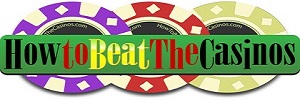Where the Real Slot Wins Are in Las Vegas
If you’ve ever walked the Strip in Las Vegas and wondered, “Where do the machines actually pay around here?”—you’re not alone. I’ve been asking that question for years. And I’ve done the work, too. I’ve tracked my own play, talked to regulars, observed trends, and tested casinos on and off the beaten path.
Here’s the truth: the best-paying slot machines in Las Vegas are not in the places you’d assume. They’re not at the flashiest casinos. They’re not sitting right next to the entrances with neon signs begging for your attention. And they’re definitely not on the main floor of the biggest resorts.
No, the real wins are often hiding in plain sight—in quieter corners, in smaller casinos, and in the kinds of venues most tourists breeze past without a second glance.
Let me explain.
We’re all taught—either directly or through marketing—that the Strip is the epicenter of everything. And for excitement? Sure. For entertainment, shows, restaurants, luxury? Absolutely. But for slots that actually pay? That’s another story.
The big resorts rely on volume. Tourists come in, drop a few hundred bucks, maybe grab a drink, take a selfie, and move on. Most of them never look back. That’s the kind of traffic where a casino can tighten the machines and still make a fortune.
So why would they offer generous slot payouts? The truth is—they often don’t.
I’ve played machines in several well-known Strip casinos and tracked my hit frequency, bonus frequency, and average return over time. The numbers don’t lie. On the main Strip floor, you’re often getting tighter return-to-player (RTP) percentages. You’ll get a flashier show, but fewer actual wins.
Now contrast that with some of the off-strip and downtown casinos—places like those tucked a few blocks off Fremont, or the locals’ favorites off Flamingo or Tropicana. These places compete differently. They know they’re not going to win your attention with a giant fountain or a celebrity DJ. They have to win it with something else: better games, better odds, and a better chance to keep you coming back.
I’m not saying they’re loose in the old-school sense. Casinos today are smarter than that. But the payouts are noticeably better—especially on mid-volatility and older machines. These casinos want your return business, not just your foot traffic. That makes a huge difference.
The best part? You can feel it when you’re playing.
At some of these spots, I’ve hit bonuses on machines within the first 10 spins. I’ve had extended sessions on $1.50 bets where the machine gave back just enough to keep me rolling—and then surprised me with a 40x hit out of nowhere. That kind of play keeps you in the game longer. And over time, that’s what builds up your chances of walking away ahead.
Another key takeaway from my recent runs: the machines that are buried—off to the side, near the sportsbook, or back by the restrooms—are often looser than the ones front and center. Why? Because they’re not the bait. They’re not meant to lure in the casual player who just walked in with a tourist buzz. They’re for the grinders. The regulars. The ones who look past the surface.
I also noticed that older, classic machines—those big clunky cabinets with basic graphics and single-line play—sometimes had better return rates than the newest, trendiest games with giant curved screens. New games aren’t always tighter, but they’re often designed with more entertainment than equity in mind.
So what’s the takeaway here?
If you want to improve your odds in Vegas, think like a player, not a tourist.
Go where the locals go. Look for quieter casinos with solid reputations and regular traffic, not just foot traffic. Walk past the showpieces. Scout for machines that aren’t on display like a showroom car. Play where the casino has to earn your loyalty.
And when you find a place where the machine hits feel fair, where your bankroll lasts longer, where bonuses actually lead to meaningful payouts—stick with it. That’s your spot. That’s where the real edge is.
Vegas isn’t rigged against you—but it is rigged against people who play with their eyes closed.
So keep yours open. Look beyond the lights. And remember: the real game isn’t always where the crowd is—it’s often in the quiet corner, waiting for someone sharp enough to sit down.

